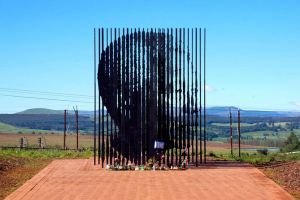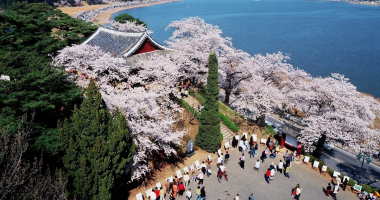Top 11 Most Beautiful Historical Sites in South Korea
South Korea's culture and entertainment exports are attracting an increasing number of visitors. However, the country known as the Land of the Morning Calm, ... read more...like other East Asian countries, has a rich history and heritage worth researching. You can't go wrong with South Korea if you want to see historical sites. Here are 11 most beautiful historical sites in South Korea that are recommended to see on your next trip!
-
Gyeongbokgung Palace is one of the most beautiful historical sites in South Korean. The palace, which was built in 1395 on King Taejo's instructions during the Joseon Dynasty, is located in the heart of Seoul and houses his majesty. The inner-city mountains serve as a backdrop, providing a harmonious perspective of nature and the palace.
The palace is separated into two sections: official government areas and royal private parts (King's apartments, Queen's apartments, King's mother apartments, etc.). Gyeonghoeru and Hyangwonjeong are two notable pavilions that contribute to the palace's tranquil ambiance.
Two royal guard changing ceremonies are held in the palace every day (except Tuesday) at 10 a.m. and 2 p.m. During the Joseon dynasty, the ritual commemorates the opening and closing of the palace gates, with the guards ensuring the King's safety. They were stationed at the main gates' entrances, inspecting visitors' entrances. There were day shifts and night shifts, and this ceremony was held whenever the royal guards needed to be replaced.
Location: Jongno District, Seoul
Timing: 9 am - 6 pm
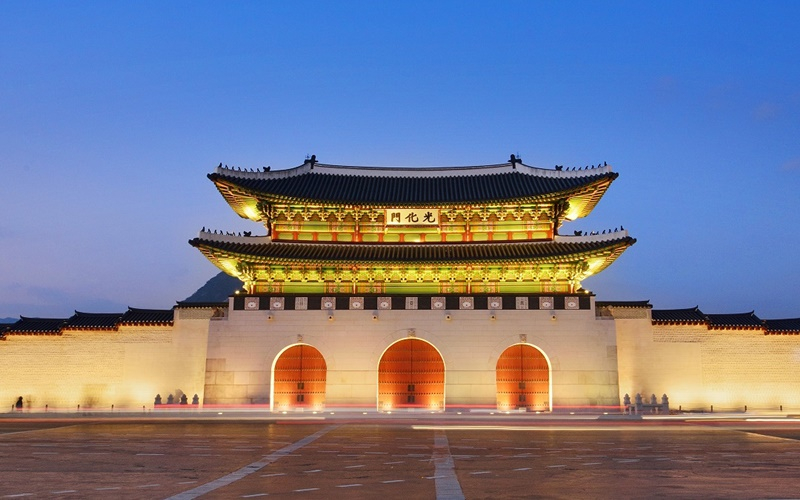
Photo: https://www.korea.net/ 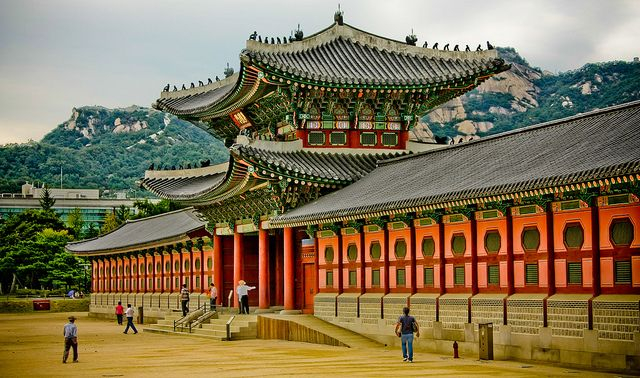
Photo: https://www.pinterest.com/ -
Changdeokgung Palace, Seoul's second most popular palace, is located next to Gyeongbokgung Palace. It is one one of the most beautiful historical sites in South Korea. It has its charm, having been erected in 1405 as a supplementary palace for kings and queens.
Huwon, the secret garden, is the most well-liked location. It has stunning natural scenery. In the center of the garden sits Buyongji, a big pond. The architecture of Buying Jeong is unusual, with a cross-shaped roof and two supporting pillars rising from the pond. King Jeongjo (1752–1801) and his courtiers are known to have loved fishing here frequently. In this garden, Joseon Kings unwinded, studied, and even penned poetry to escape the confines of royalty for a few moments.
When compared to the Gyeongbokgung Palace, which is more grandiose and built to reflect the King's sovereign might, you may feel at peace with nature merely by wandering around the palace lanes. Since 1997, Changdeokgung Palace has been on the UNESCO World Heritage List.
Location: 2-71 Waryong-dong, Jongno-gu, Seoul
Timing: 9 am - 6:30 pm
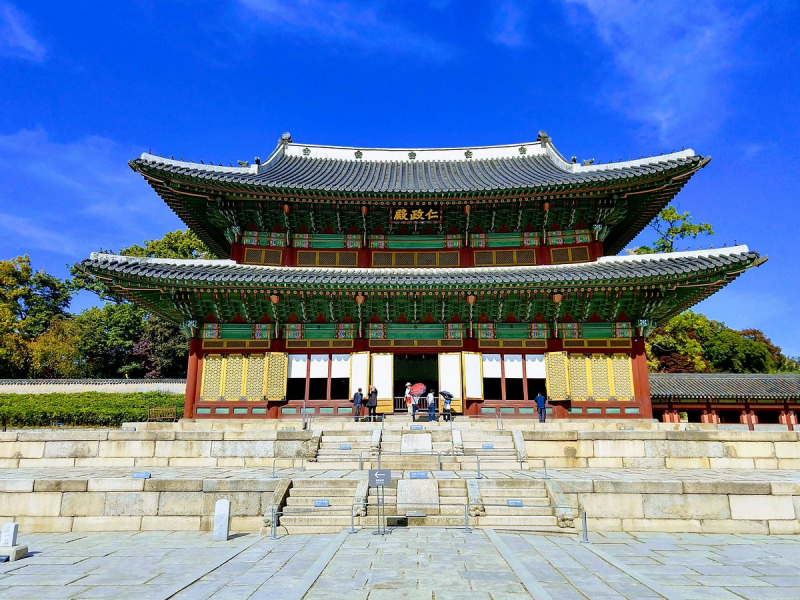
Photo: https://www.tripadvisor.com.vn/ 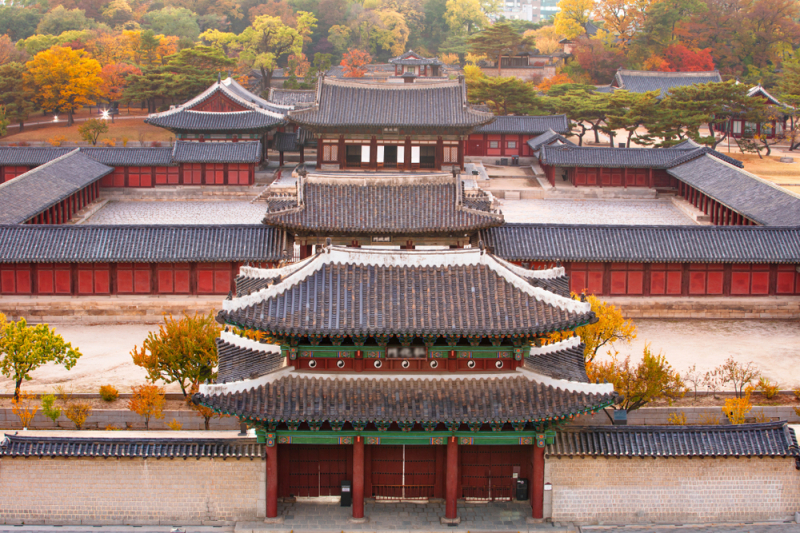
Photo: https://www.travelhk.com/ -
Why not take a stroll through a traditional Korean village after seeing the palaces of Seoul? Between the two great palaces, Gyeongbokgung and Changdeokgung are Bukchon Hanok Village. It has between 800 and 900 hanboks (traditional Korean houses). Because of its location, Bukchon means "north village" in Korean. You must climb a short distance, but it is well worth the effort.
You can get a sense of what life was like in Korea 600 years ago during the Joseon era. High-ranking government officials, lords, and influential families all lived in the village. It is still a residential neighborhood today, so please be respectful when visiting the village.
Location: Jongno-gu, Seoul
Timing: 09 am - 09:30 pm
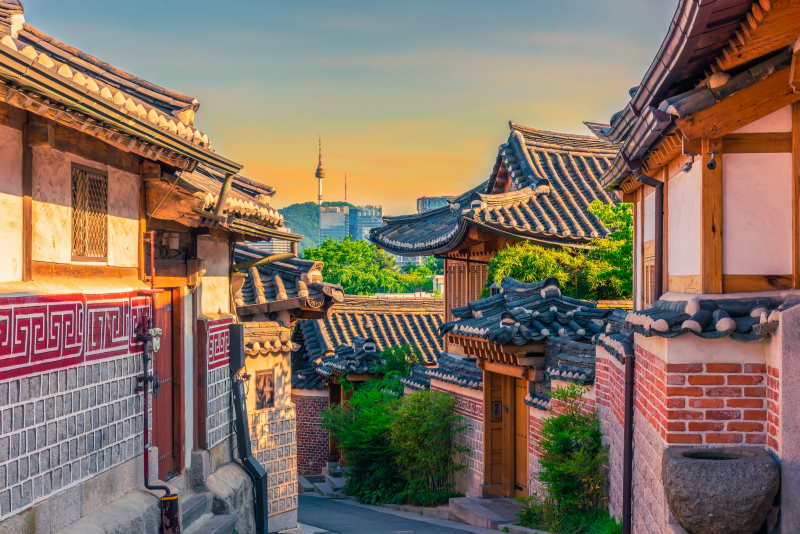
Photo: https://vn.trip.com/ 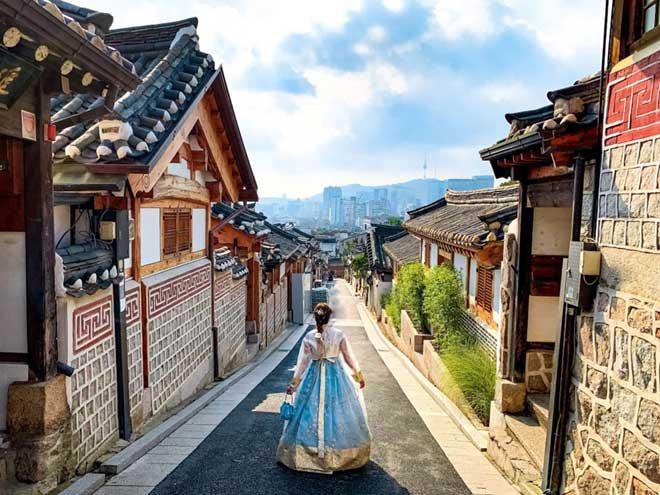
Photo: https://www.24h.com.vn/ -
The "spirit tablets" of Joseon kings and queens are kept in the Jongmyo temple. Jeongjeon, the major shrine, was established in 1395 to house the ghosts of the Joseon Kings and Queens who ruled the country. The shrine houses 49 spirit tablets of famous regents, whereas the spirit tablets of minor kings are kept in Geunjeongjeon, a smaller shrine. It has been designated as a UNESCO World Heritage Site.
The ritual of Jongmyo Daeje takes place every year on the first Sunday in May. It is the main memorial service held to honor the Joseon royal regents who have passed away. During the Joseon dynasty, kings visited the Jongmyo shrine to take part in the royal procession and prepare sumptuous offerings (food and drinks) in honor of their forefathers. The procession now begins at Gwanghwamun and ends at Jongmyo Shrine. On this day, many ceremonies are performed.
Location: Jongno-gu, Seoul
Timing : 9 am - 6:30 pm
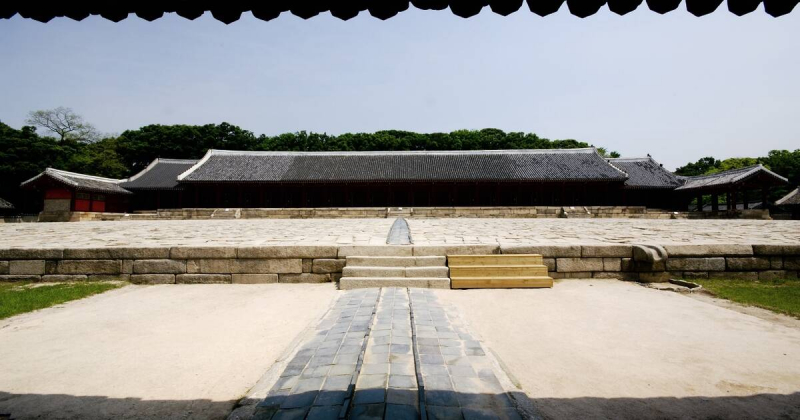
Photo: https://whc.unesco.org/ 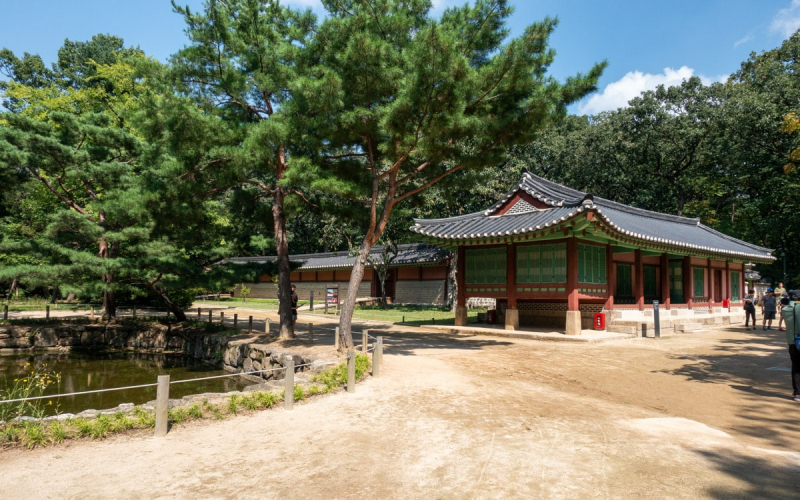
Photo: https://www.theseoulguide.com/ -
Suwon is a beautiful historic city in the south of Seoul, about an hour's drive away. The city is known for its World Heritage-listed defenses built by King Jeongjo (1752–1801) during the Joseon dynasty. In 1794, he relocated the capital from Hanyang (now Seoul) to Suwon. However, the monarch died soon after the castle wall was completed, and Seoul reclaims its status as the capital.
Because of his modern visions, King Jeongjo is considered one of the most successful Kings of the Joseon dynasty. Unfortunately for his family, this was not the case. As his father, Crown Prince Sado, had a tragic fate, King Jeongjo succeeded his grandpa (the King Yeongjo) (he was put to death by his father due to a certain mental illness).
That is why the Hwaseong Fortress was constructed: as a memorial to King Jeongjo's filial piety toward his father. The fortress, too, was a representation of the king's might. However, it was primarily a national defense for the city. Along with this wall, you'll see that it has bastions, artillery towers, signal towers, secret doors, and many other features that are at the cutting edge of military technology at the time. It has been declared a UNESCO World Heritage Site.
Location: 320-2 Yonghwa-dong, Jangan-gu, Suwon-si, Gyeonggi-do
Timing: 9 am - 6 pm
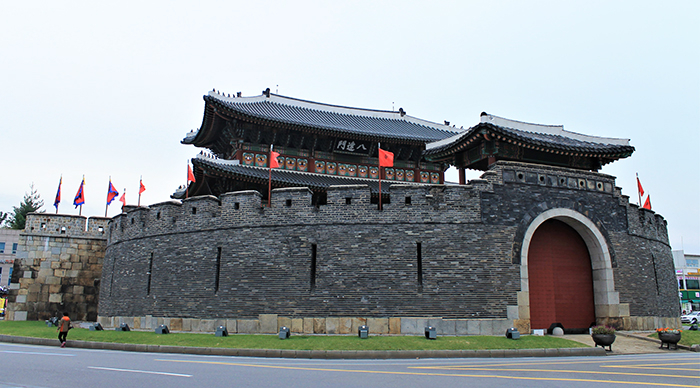
Photo: https://www.korea.net/ 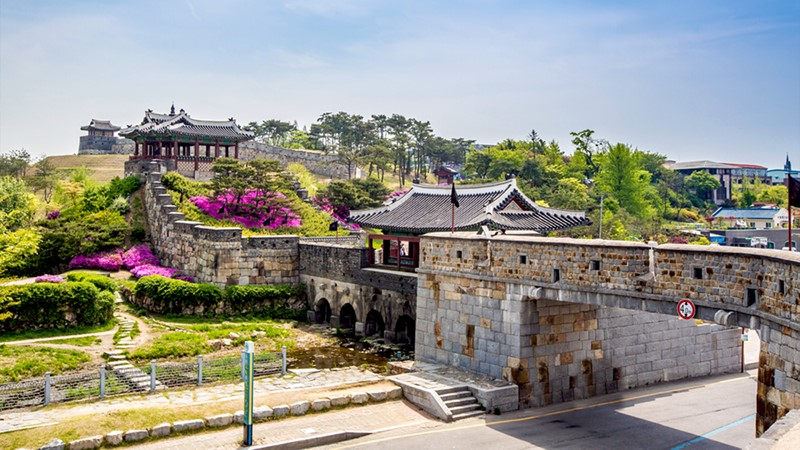
Photo: https://addflag.com/ -
Jeonju has several historical places to see, the most important of which are Jeonju Hanok village and the Gyeonggijeon shrine.
In a section of small lanes, Jeonju Hanok Village welcomes nearly 800 Korean traditional houses. While the rest of the city has become more industrialized, the Hanok village has maintained its historical charm and customs. It's particularly well-known for its lovely roof curves. It is the country's largest and most intact Hanok settlement.
The image of Monarch Tae-jo, the founder and first king of the Joseon dynasty, may be found in Gyeonggijeon Shrine, which was established in 1410. The King's and his wife's gravestones can be found here. In 1614, the existing structure was remodeled. In addition, pictures of previous monarchs such as Sun-jong, Cheol-jong, Yeong-jo, and others are on exhibit inside Gyeonggijeon.
Location: Jeonju and overlaps Pungnam-dong and Gyo-dong
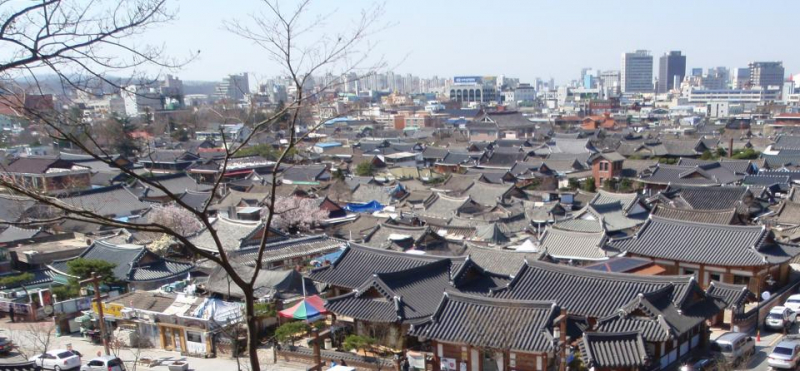
Photo: https://www.cittaslow.org/ 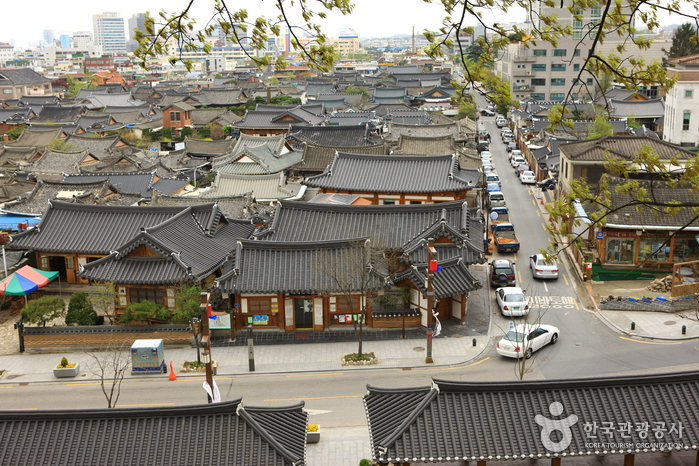
Photo: https://www.kpopmap.com/ -
Haedong Yonggungsa is a one-of-a-kind temple located on the northeast coast of Busan! The Statue of the Great Goddess Buddha of Mercy in the Sea, Daeungjeon Sanctuary, Yong Wang Dang Shrine, and a three-story pagoda with four lions symbolizing joy, anger, sadness, and happiness, all of which look out over the sea, were all built-in 1376 during the Goryeo Dynasty by a famous Buddhist teacher Nang. Visitors can descend the 108 steps to the water and enjoy the breathtaking views of the beaches.
Location: 86 Yonggung-gil, Gijang-gun, Busan
Timing: 5 am - 6:30 pm
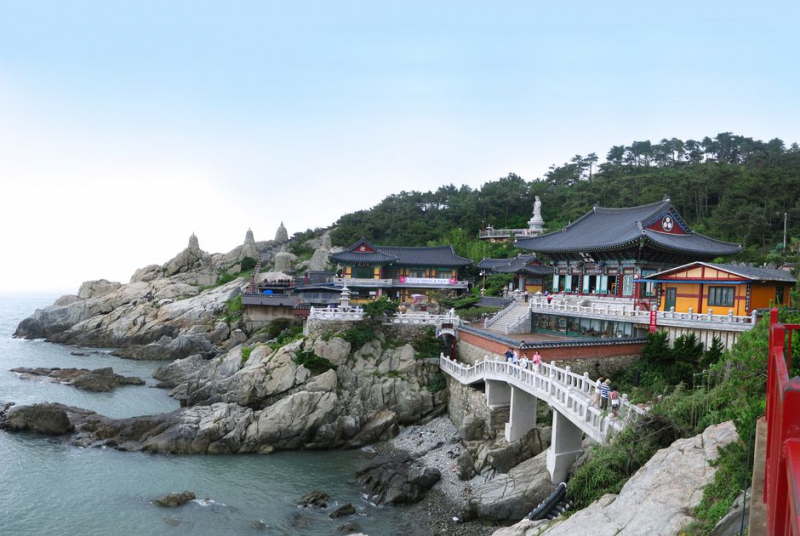
Photo: https://yeudulich.com/ 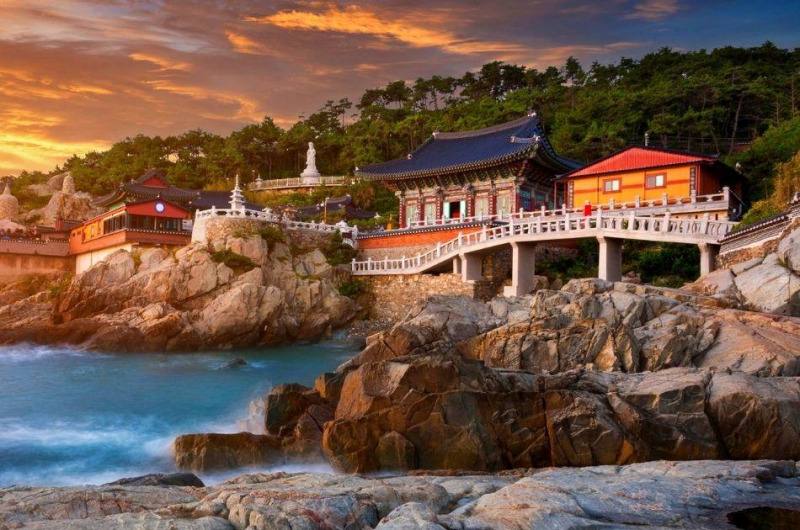
Photo: https://dailytravelpill.com/ -
Hahoe Village (Gyeongsangbuk-do province) is notable for its 230 classic Joseon residences and is home to descendants of the Ryu clan of Pungsan. By displaying Korean traditional living cultures and ancient building forms, the hamlet protects various cultural heritages.
The Nakdong River, which flows around the town's border, gives Hahoe Village its name (Ha means "water" and hoe means "turn around," so literally "Village Enveloped by Water"). The settlement is nestled in the foothills of Hwasan Mountain, an east-facing branch of Taebaek Mountain. Large tile-roofed residences with their unique appeal may be seen walking through the village's center. The traditional Korean mask dance is also performed at Andong Folk Village.
Hahoe Village is surrounded by wonderful natural scenery, including the graceful Nakdong River, the gorgeous Taejongdae Cliff, continuously extending sandy beaches, and lush, ancient pine trees.
Location: 86 Jeonseo-ro, Pungcheon-myeon, Andong, Gyeongsangbuk-do
Timing: 9 am - 6 pm
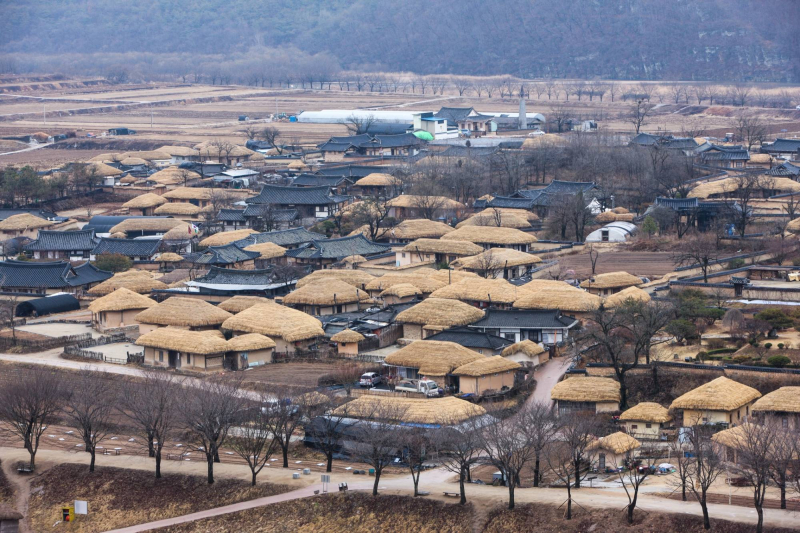
Photo: https://www.kimstravel.com/ 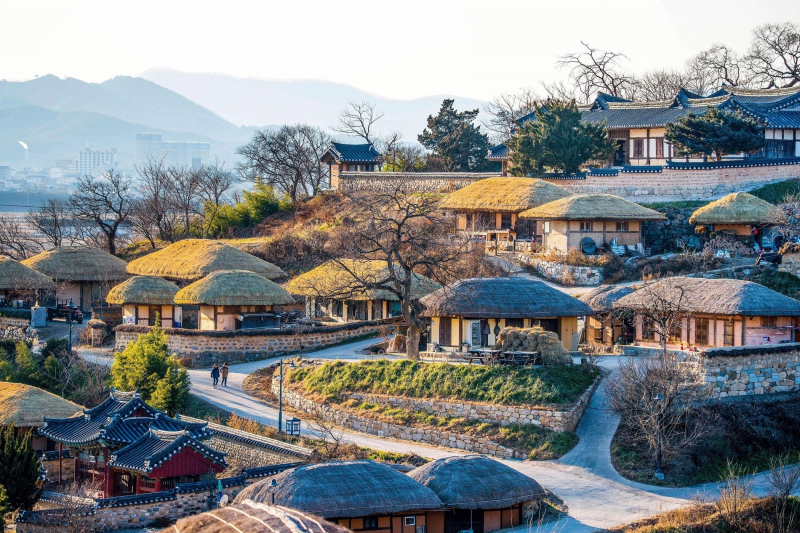
Photo: https://www.nationalgeographic.co.uk/ -
Naganeupseong Folk Village is known as the most beautiful historical site in Jeollanam-do Province, and provides a unique opportunity to journey back in time. A 1,410m fortification wall surrounds the village, protecting the people from intruders. It may surprise you to learn that roughly 100 families still live in the village, which has been well conserved. Similarly, the Joseon Dynasty erected castle is still standing. From the top level of the castle, you can get a fantastic view of the hamlet. Simply walking through the village reveals a significant number of straw-roof cottages. You can partake in a variety of cultural activities, such as silk farming, hanji (traditional Korean paper), or simply watching traditional performances.
Location: 401 Dongnae-ri, Nagan-myeon, Suncheon-si, Jeollanam-do
Timing: 9 am - 6 pm
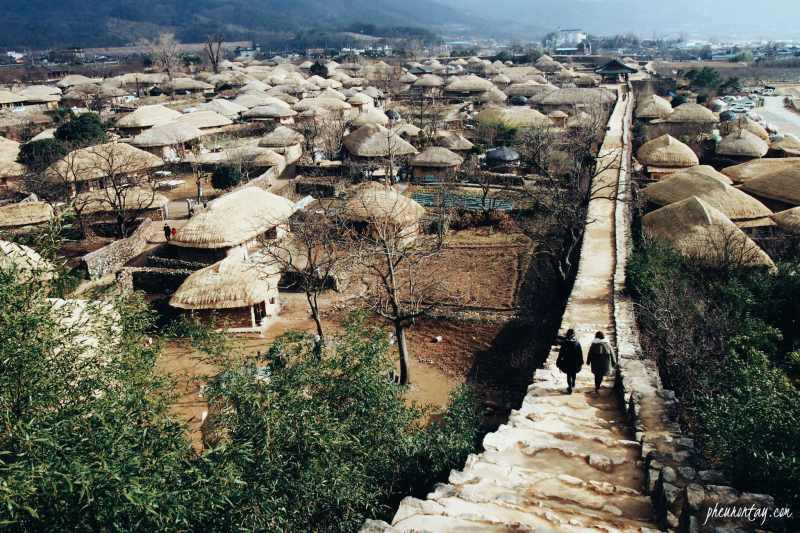
Photo: https://thecalmchronicle.com/ 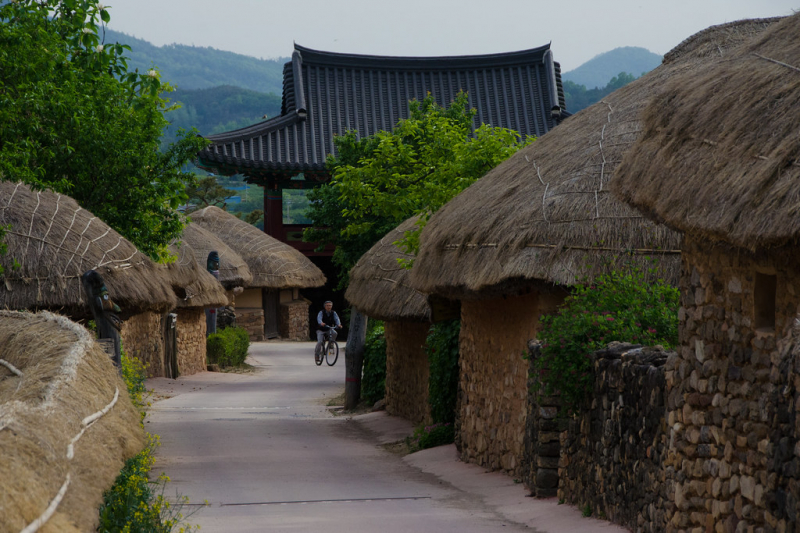
Photo: https://www.flickr.com/ -
Three cities in the current Chungcheongnamdo province, Buyeo, Gongju, and Iksan, have a legacy and remain from the Baekje Kingdom. These places will transport you back to the period of the Three Kingdoms, particularly the Baekje Kingdom. The sites bear witness to Baekje Kingdom's culture and art.
The Gongsanseong Fortress and the Songsan-ri royal tombs are located in Gongju. This fortification is 2.5 kilometers long and 110 meters tall. The two pavilions Manharu and Yeonji, which offer a stunning view of the Geumgang River, are the best sites in the citadel. The royal tombs of Songsan-ri include the burials of seven rulers from the Baekje Kingdom (when Gongju was the capital of the Kingdom). The tomb of King Muryeong (462–523) and his wife is the most visited. It has approximately 2,900 relics, most of which are on display in the National Gongju Museum. Although you cannot visit the tombs, it is nevertheless a pleasant walk to take.
Location: Gongju, Buyeo, and Iksan
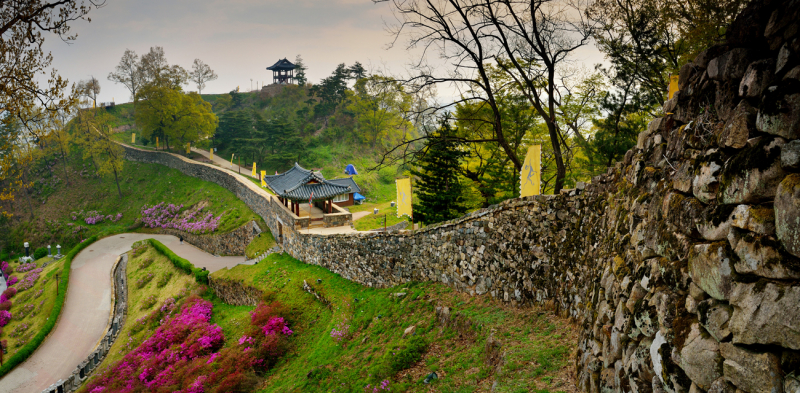
Photo: http://world.kbs.co.kr/ 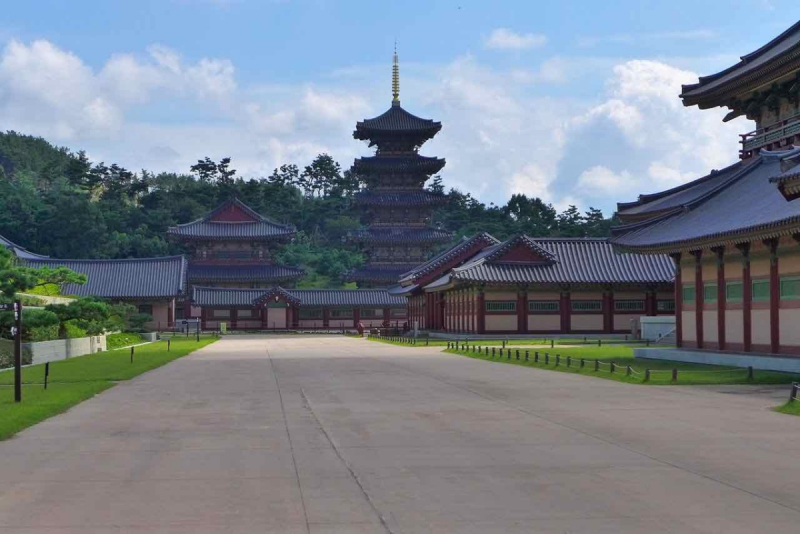
Photo: http://world.kbs.co.kr/ -
Gyeongju is a historical site. Silla Kingdom antiquities are preserved in the city! UNESCO designated the entire city as a global cultural heritage site due to its historical and cultural richness.
Bulguksa Temple is one of the most famous landmarks. The temple has undergone multiple reconstructions as a result of prior war damage, but it remains magnificent. The Buddhist temple is organized into three sections, each representing a different part of Buddha's homeland. The two pagodas, Seokgatap and Dabotap, are must-see structures, displaying exquisite Silla Kingdom artwork.
The Seokguram Grotto has been classified as the country's 24th UNESCO World Heritage Site. This man-made granite cave, located on the Tohamsan mountain, has an outstanding Buddha statue that faces the horizon. It's an enigmatic location. A stunning carving wall surrounds this work of art.
Location: 385, Bulguk-ro, Gyeongju-si, Gyeongsangbuk-do, Gyeongju
Timing: 7:30 am - 5:30 pm
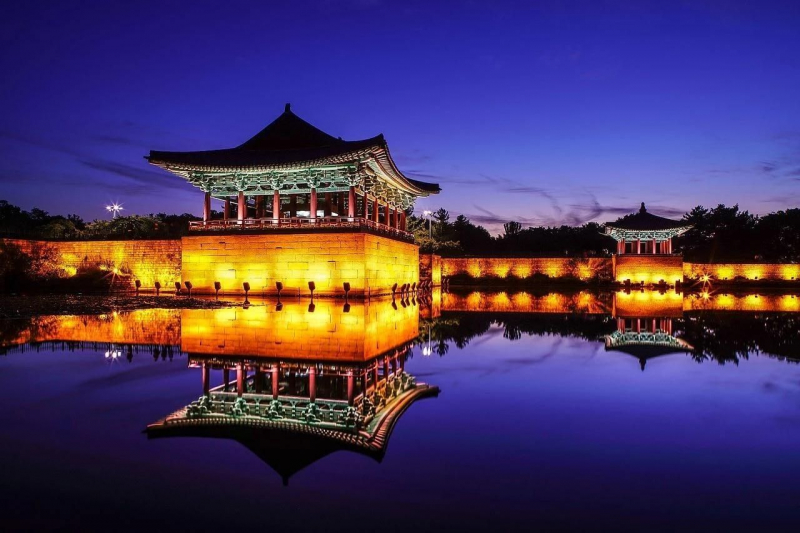
Photo: https://theculturetrip.com/ 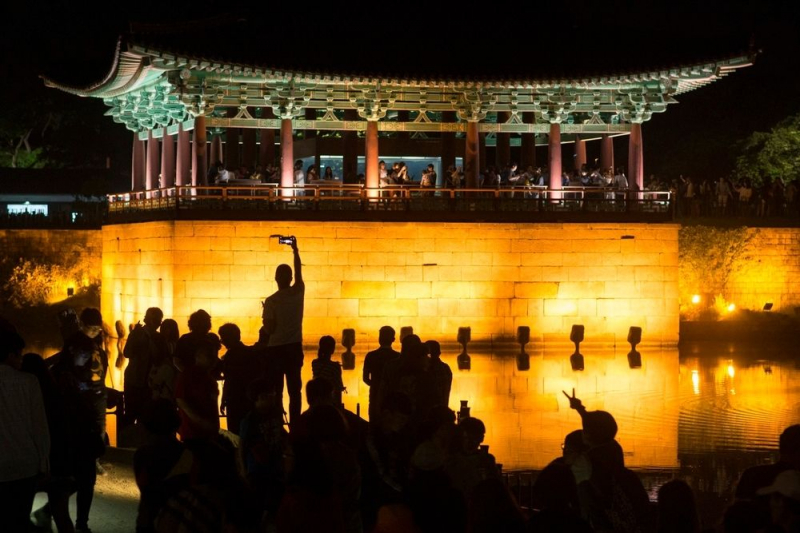
Photo: http://benjphotos.com/













